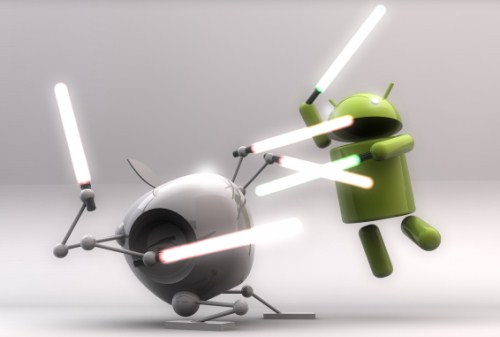Why Doesn’t My Android App Look Like My iPhone App?
Published: November 6, 2012Have you ever switched smartphones? Not necessarily from a particular phone, like an iPhone 4, to a newer version of the same phone, like an iPhone 5. But, from one type of phone to another. An example would be moving from an iPhone 4S to a Samsung Note, or from a Droid Razr to an iPhone 5.
The difference between these phones is not only in the way that they look, and the company that produces them, but in the way that they function. Apple’s iPhones are powered by software referred to as iOS, while most other phones on the market right now use what is called Android, which functions quite differently.
iOS
When you put iOS under the microscope, an interesting trend emerges. If you examine not only the way users interact with the system, but the way the system interacts with users, you can start to see that iOS is, at its core, app-driven.
Everything about iOS that is functional or interesting involves opening an app from the home screen, and users expect that. Because only one company makes iPhones and iOS, iPhone users know that all apps on their phones function in this way, starting at the home screen and drilling downward toward what they actually want. Even when you look at new features that Apple adds to iOS over time, you can even see that they all involve things like making it easier to organize apps into folders, multitask and run apps in the background, and get your attention with notifications. All of these things things involve interacting with apps. They don’t add any real functionality, they just make the app experience better.
Android
Android was designed from the start to be scalable and dynamic. Because Android is open-source (available to everyone for free, to use however they like), it is installed on literally hundreds of different devices, all with different screen sizes and resolutions, and different capabilities. When you take into account this diversity and the fact that more often than not, these device manufacturers market their device first and simply list Android as a feature, you can can see how Android is very device-driven.
The open and diverse nature of Android shows itself in the design process, where scalability has to be considered to ensure that a clean and consistent experience is provided on all devices. Sure, Android has apps like iOS. But, apps aren’t the primary driver behind the Android experience. It’s up to the device manufacturer whether or not they will alter the way the OS presents applications to the user, so the ecosystem is geared toward devices themselves.
As you can see, while Android and iOS do the same thing, their approaches set them apart, and change the way that users expect their devices and apps on their devices to behave.
Which platform are you most fond of? Share in the comments!




